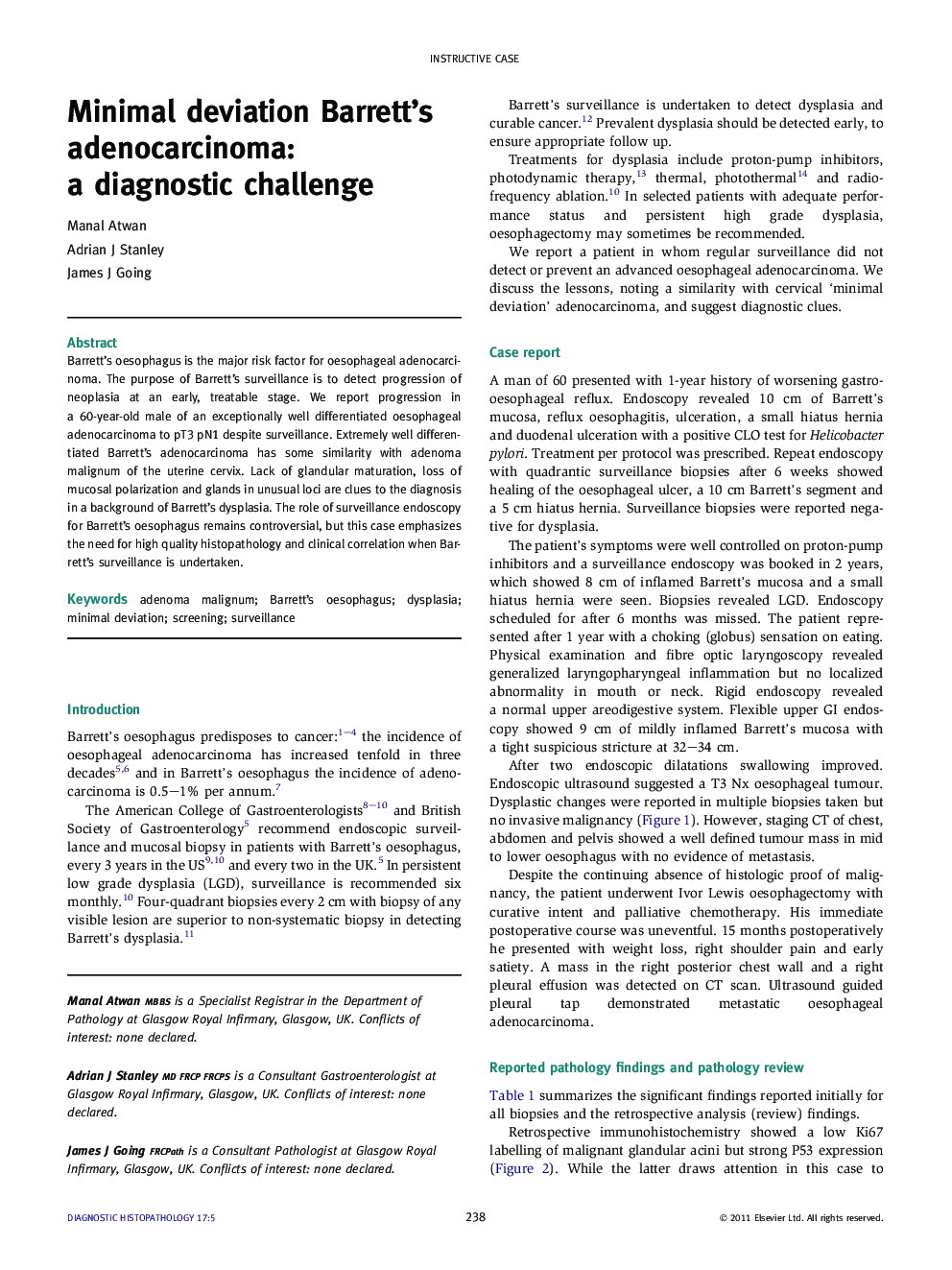| Article ID | Journal | Published Year | Pages | File Type |
|---|---|---|---|---|
| 4131532 | Diagnostic Histopathology | 2011 | 5 Pages |
Barrett’s oesophagus is the major risk factor for oesophageal adenocarcinoma. The purpose of Barrett’s surveillance is to detect progression of neoplasia at an early, treatable stage. We report progression in a 60-year-old male of an exceptionally well differentiated oesophageal adenocarcinoma to pT3 pN1 despite surveillance. Extremely well differentiated Barrett’s adenocarcinoma has some similarity with adenoma malignum of the uterine cervix. Lack of glandular maturation, loss of mucosal polarization and glands in unusual loci are clues to the diagnosis in a background of Barrett’s dysplasia. The role of surveillance endoscopy for Barrett’s oesophagus remains controversial, but this case emphasizes the need for high quality histopathology and clinical correlation when Barrett’s surveillance is undertaken.
